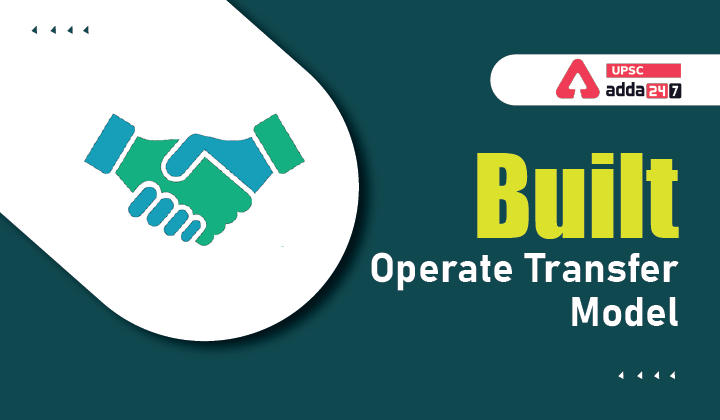Table of Contents
Built Operate Transfer : Relevance
- GS 3: Infrastructure: Energy, Ports, Roads, Airports, Railways etc.
PPP in India: Context
- Recently, the National Highways Authority of India (NHAI) has decided to develop at least two highway upgradation projects using the build-operate-transfer (BOT) model during the current quarter.
Built Operate Transfer Model: Key points
- NHAI has said that road projects have been funded during the Covid period through public money and will continue to do so if required.
- Over the last few years, especially since the onset of the pandemic, the NHAI resorted to offering projects under the Hybrid Annuity Model (HAM) that ensures funds to the company building the road, thereby insulating it from financial risk to a certain extent.
- Under the HAM model, 40 per cent of the project cost is paid by the government as construction support to the private developer, and the remaining 60 per cent is to be arranged by the developer.
BOT model in India
- The BOT model was the preferred model for road projects, accounting for 96% of all projects awarded in 2011-12.
- When the interest in BOT projects started to wane, road construction shifted to the traditional engineering, procurement and construction (EPC) mode, with the HAM (Hybrid Annuity Model) model being devised later.
- Under the EPC model, the government pays the entire cost, thereby insulating the contractor entirely from financial risk.
- Previously, NHAI tried to assign road projects on BOT in 2020. The projects were, however, finally handed in March 2021 at a premium, but only after a couple of extensions in bidding deadlines and inclusion of a few incentives.
- To incentivise the projects, the government decided to assess the revenue potential of a project every five years during the concession period as against every 10 years earlier.
What is BOT model?
- Under this model, private partner is responsible for the design, building, operation (during the contracted period) and transferring back the project to the public sector.
- Here, private sector brings in the money and collects user fees for the period decided beforehand in the agreement.
- Example: Projects like National Highways.
Engineering, Procurement and Construction (EPC)
- Under this PPP model, the procurement of raw material and the construction costs are completely borne by the government.
- The private sector’s participation is minimum and is limited to the provision of engineering expertise.
Hybrid Annuity Model (HAM)
- HAM is a mix between the existing two models – BOT Annuity and EPC.
- As per this model, the government will contribute to 40% of the project cost in the first five years through annual payments (annuity). The remaining 60% will be made on the basis of the assets created and the performance of the private player.
- As the government pays only 40%, during the construction stage, the private player has to arrange money for the remaining amount.
- Under this model, there is no toll right for the private player.
Read current affairs for UPSC





 TSPSC Group 1 Question Paper 2024, Downl...
TSPSC Group 1 Question Paper 2024, Downl...
 TSPSC Group 1 Answer key 2024 Out, Downl...
TSPSC Group 1 Answer key 2024 Out, Downl...
 UPSC Prelims 2024 Question Paper, Downlo...
UPSC Prelims 2024 Question Paper, Downlo...




